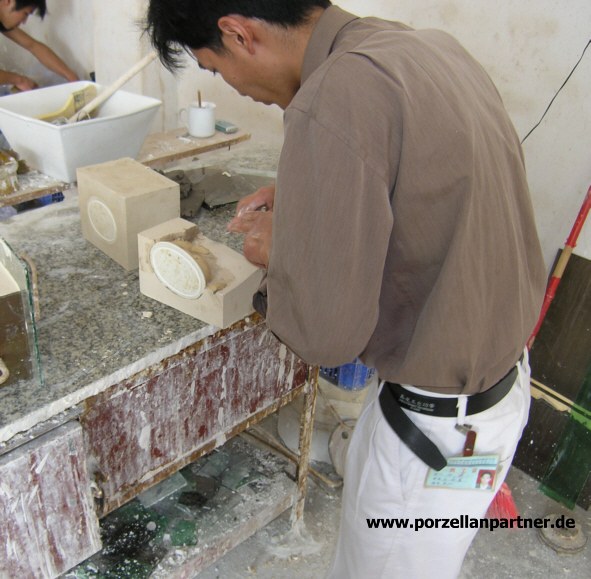Pre-mould

Before porcelain production can even begin, a number of moulds have to be made. It starts with a model maker creating a model for the production of the so-called pre-mould.
The pre-mould is created on the basis of this model. The pre-mould is a plaster cast as a negative mould. The pattern maker takes great care and precision when creating this pre-mould, as even the smallest error would later affect the beauty, appearance or function of the porcelain item. Essential product features are decided during the production of the pre-mould, and this is where many errors that later occur in the porcelain can be avoided. Glaze seams, edges, drainage and many other details can, should and must be determined during production.
The pattern maker should also consider the details of the future production process when creating the pre-mould. This applies above all to
- the inlet points for the slagger in casting moulds,
- the shape of the stamp (rotary stamp)
- the construction of multi-part moulds for jiggering moulds,
- Opening edges of multi-part moulds
- and many other production-specific details.
If possible, the pre-mould should be tailored exactly to the subsequent production process. One of Holst Porzellan's special manufacturing skills is already evident in this preliminary stage of product development, as we do not usually leave the planning of a preform to the model maker alone.
When planning the preform - especially for hotel porcelain and catering tableware with essential functional features - the user's specialist knowledge is also required, which the pattern maker generally does not have. Here is an example: If the coffee pot, pourer or jug ends up with a deep, internal opening at the inside of the handle, this can be avoided when planning the pre-mould. The pattern maker cannot be expected to have the specialist knowledge of how hotel porcelain must ultimately prove itself in gastronomic use. This lack of communication between production and use is the reason why there are so many items on the market that are not suitable or not particularly suitable for professional use.
In high-tech porcelain production, it is no longer necessary to produce the so-called "zero samples" on the basis of a preform due to the latest technology. Nevertheless, many porcelain factories still produce a pre-mould in the conventional way in order to ensure a physical inspection of the zero sample. From a purely technical point of view, zero samples can now also be produced without a pre-mould using 3D printing.
The pre-mould is then used to produce the porcelain master samples. Once the customer - or the actual product developer - has approved these master samples, the pre-mould is no longer needed and can be destroyed.
